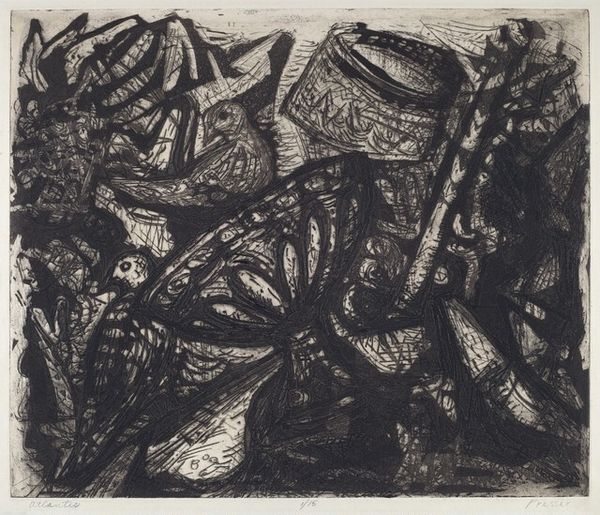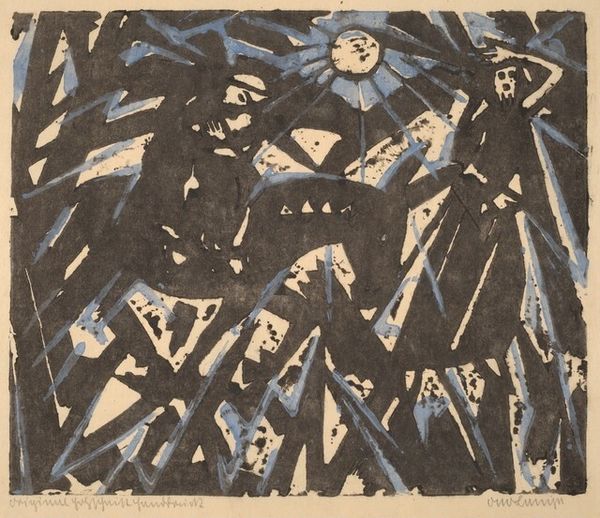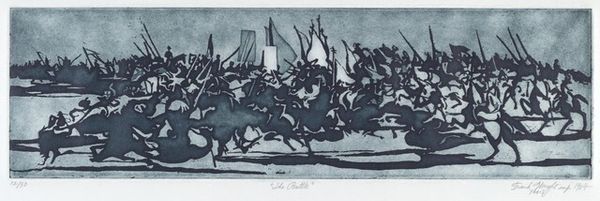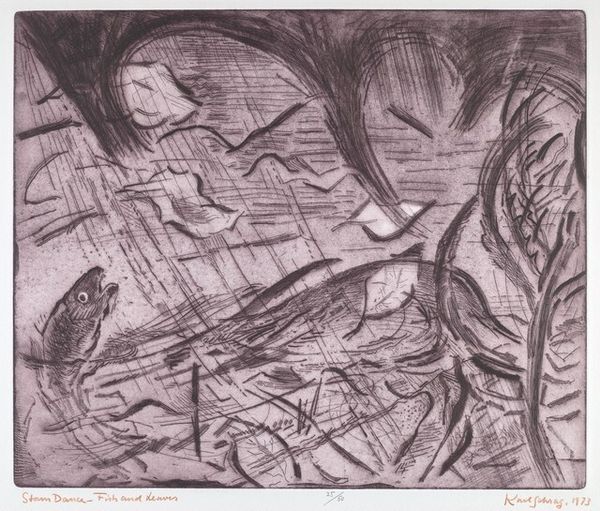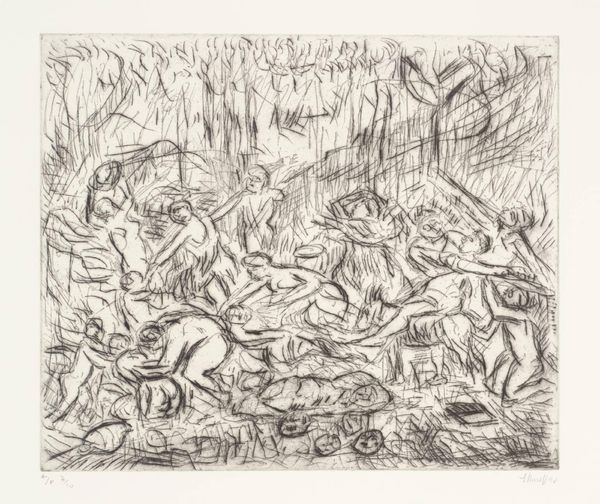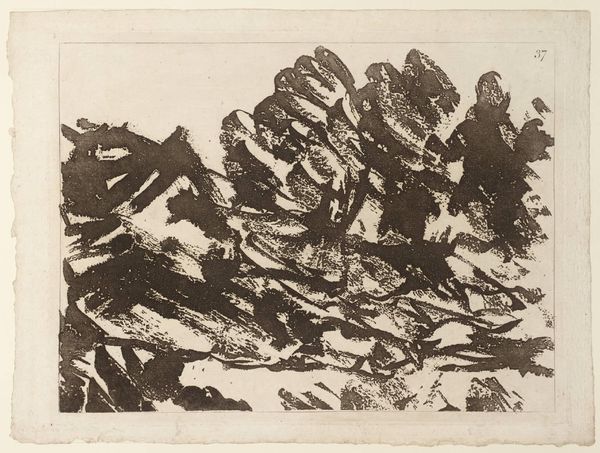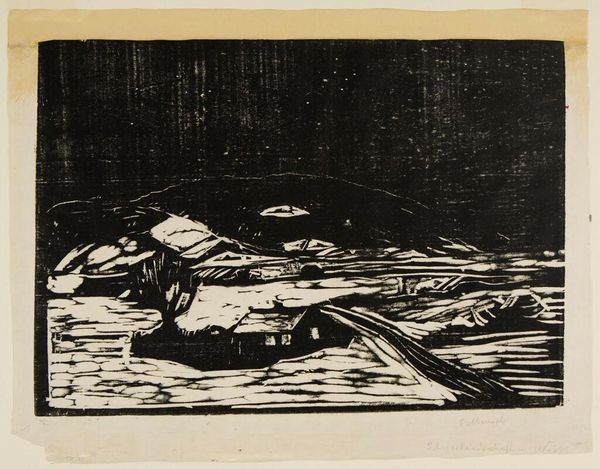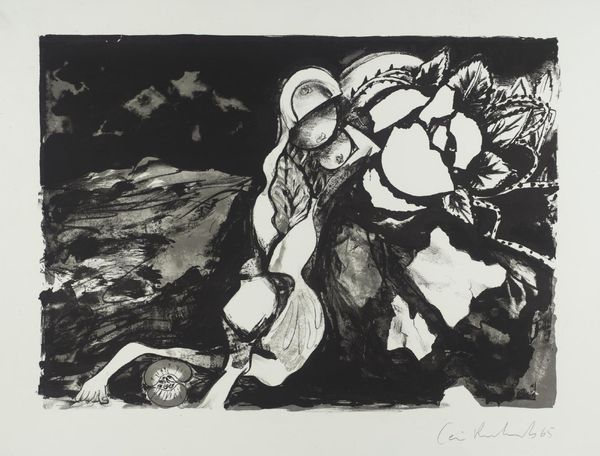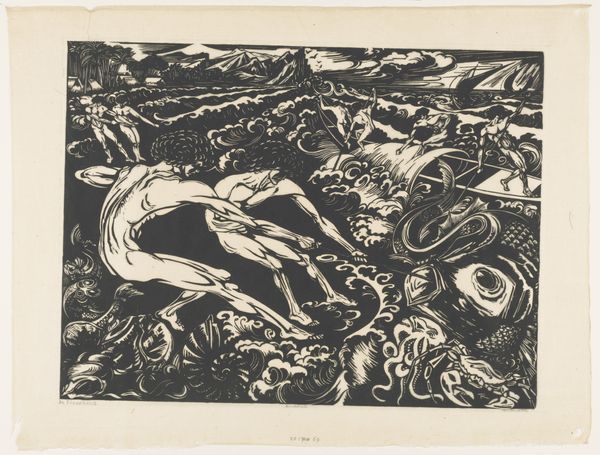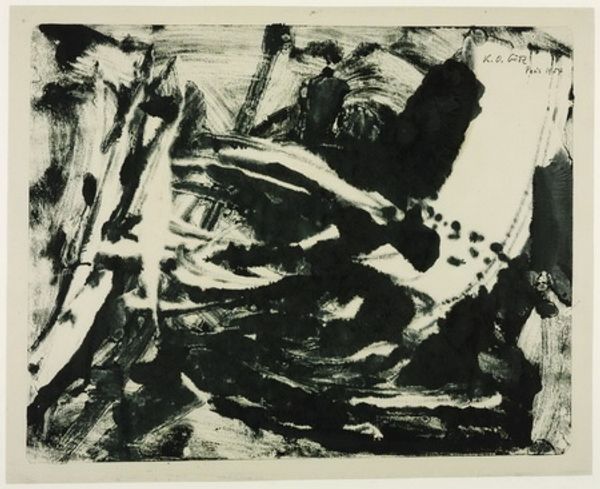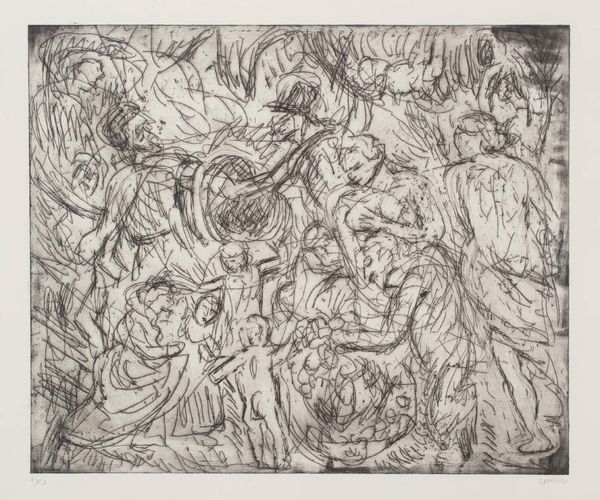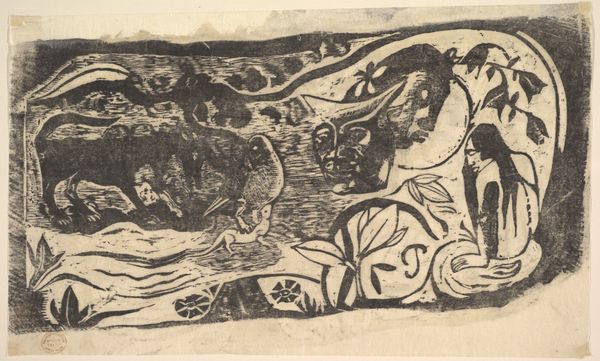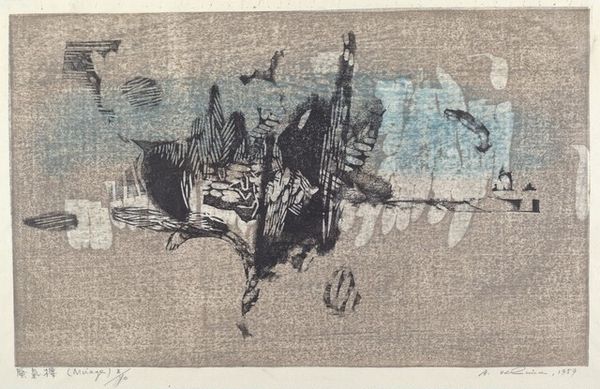
print, etching
# print
#
etching
#
figuration
#
linocut print
#
history-painting
#
monochrome
Copyright: National Gallery of Art: CC0 1.0
Curator: Immediately, the sheer density of the composition strikes me; a churning mass rendered in somber, almost mournful hues. What’s your read? Editor: This etching by Frank Wright, aptly named "The Little Battle," dating from 1963, is a monochrome scene that definitely leans into depicting conflict—perhaps not just of arms, but of ideologies, given the historical context of its creation. Curator: It is all in the execution. As an etching, what grabs my attention is the labor involved. You have to prepare the metal plate, acid-etch, proof, and rework. So how does this intense labor affect what's being shown? What’s the exchange value here, socially? Editor: It speaks volumes about the mid-20th century and post-war anxieties, when the shadow of grand, historically-charged battles still lingered heavily in the collective consciousness. We see these chaotic gatherings and skeletons which tell tales of post conflict resolution, all pointing to cycles of death and despair within global society. Curator: The materiality supports your interpretation, definitely. It would be naive to read “The Little Battle” outside the cultural context of 1963. There’s a powerful symbolism too –the raised flags which might hint at established systems that promote violence or blind obedience towards higher hierarchies— gender and class come to mind. Editor: It does encourage a re-evaluation. You see it's like Wright critiqued the traditional notion of heroism often associated with history painting. He gives us an almost anti-heroic vision, emphasizing the chaotic brutality and anonymity inherent in conflict. I am interested though to look into Wright’s production method - this process and its role at his time to re-create such dark and challenging narrative of "Battle" to society. Curator: An essential layer in fully exploring Wright’s work and our understanding of it. Editor: Exactly! Considering labor and its intersection with the final meaning only adds to a thorough art history lesson. Curator: Agreed. It challenges us to really engage with art, seeing beyond its surface. Editor: Precisely. From the production means all the way to the historical narrative and its socio-political context, everything here provides such a thorough analysis for what appears as simple black and white etching. Curator: In "The Little Battle" we encounter a complex convergence that pushes boundaries. Editor: Certainly, a dialogue that lingers far beyond the initial, arresting impression.
Comments
No comments
Be the first to comment and join the conversation on the ultimate creative platform.
